Founded in 1860, the institution that would one day be known as New York Medical College (NYMC) was a beacon of hope for women, marginalized communities, as well as all who sought to advance medical knowledge. Since its inception, NYMC has ushered forth innovation and medical discovery and has risen to become one of the top medical colleges and research institutions in the country.
Countless physicians, scientists and health pioneers have started their journey at the College, and its values and commitment to science remain strong to this day. Explore the full history of NYMC, including a detailed timeline and biographies of notable historical figures.
Origins of New York Medical College
A group of visionary civic leaders, led by William Cullen Bryant, the noted poet, abolitionist, and editor of the Evening Post, was particularly concerned with the condition of hospitals and medical education. Bryant was zealously devoted to the branch of medicine known as homeopathy. The school opened its doors in Manhattan on the corner of East 20th Street and Third Avenue as the New York Homeopathic Medical College in 1860. Bryant held the office of president of the Board of Trustees for 10 years.
Advancing Medical Careers for Women
In 1863, a separate but related institution known as the New York Medical College for Women was founded by Clemence Sophia Lozier, M.D., staffed and supervised by many of New York Homeopathic Medical College’s male faculty. In 1867, Dr. Lozier’s institution graduated the first female Canadian physician, Emily Stowe, M.D., who had previously been refused admission to every medical school in her native Canada. Susan McKinney, M.D., the first African American female physician in New York State and the third in the nation, graduated from New York Medical College for Women in 1870 with the highest grade in the class. When the institution closed in 1918, students transferred to the New York Homeopathic Medical College. Thus, New York Medical College stakes its claim to be among the first medical schools to admit women.
Metropolitan Hospital and Flower and Fifth Avenue Hospitals
In 1875, Metropolitan Hospital opened as a municipal facility on Ward’s Island, staffed largely by the faculty of New York Medical College. Today that relationship is one of the nation’s oldest continuing affiliations between a private medical school and a public hospital.
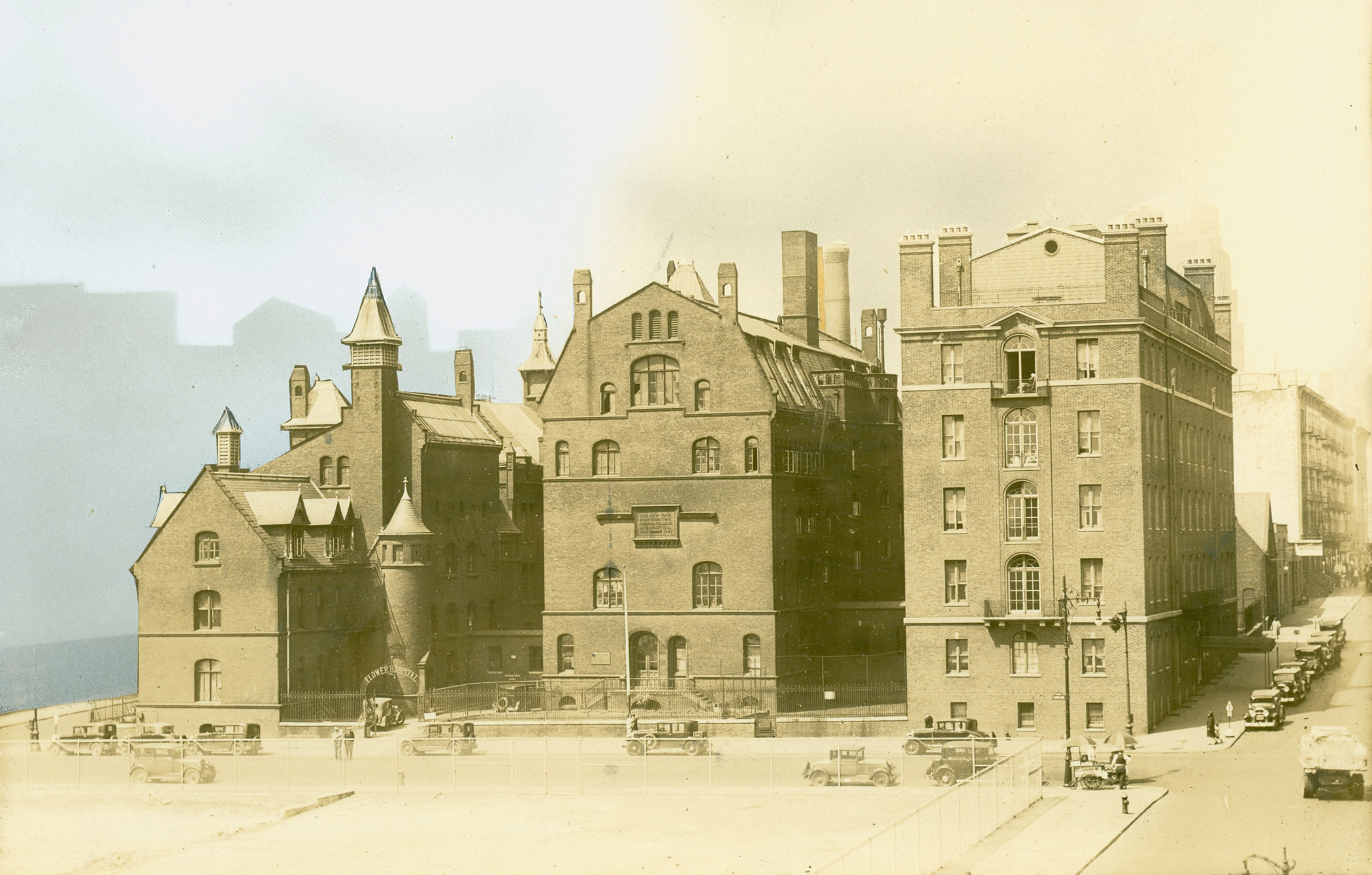
The Flower Free Surgical Hospital, built by New York Medical College in 1889, was the first teaching hospital in the country Manhattan to be owned by a medical college. It was constructed at York Avenue and East 63rd Street with funds given largely by Congressman Roswell P. Flower, later governor of New York. By 1935, the College had transferred its outpatient activities to the Fifth Avenue Hospital at Fifth Avenue and East 106th Street. The College (including Flower Hospital) and Fifth Avenue Hospital merged in 1938 and became New York Medical College, Flower and Fifth Avenue Hospitals.
A Bastion Against Bigotry
At a time when most U.S. medical schools did not admit Black students, New York Medical College was an exception. The College’s first Black male graduate received his M.D. in 1888, and over the next 30 years, during a period in which no other Manhattan medical school admitted Black students, the College graduated a large cohort of Black physicians who went on to play significant roles as both physicians and civil rights leaders. These students included Eugene Percy Roberts, M.D. 1894, known as “the Dean of Harlem Physicians” for more than 50 years of practice and leadership, George Epps Cannon, M.D. 1900, a physician and politician who led important desegregation battles in the state of New Jersey, and John A. Morgan, M.D. 1900, the first Black physician in Yonkers.
In 1928, the College became the first medical school in the nation to establish a scholarship program specifically for minority students through the efforts of Walter Gray Crump Sr., M.D. 1895. An alumnus and voluntary faculty member who participated vigorously in the academic life of the College, Dr. Crump taught surgery, served as a staff surgeon at other hospitals, was a founder of the New York Medical College for Women, was a trustee of Tuskegee Institute and Howard University, and assumed a leading role in the advancement of minority education and minority affairs. Alumna Myra Adele Logan, M.D. '33, was the inaugural recipient of the Walter Gray Crump Sr., M.D., Scholarship. She was also the first woman to perform open heart surgery and among the first African American women elected a fellow to the American College of Surgeons.
New York Medical College also distinguished itself during the early twentieth century as one of only a handful of U.S. medical schools not to impose an anti-Semitic admissions quota. By 1925, it was the explicit policy of the College “to select our student body without prejudice to race, creed or color, so that each one admitted will reflect credit upon our profession.” Many Jewish alumni from this period went on to distinguished careers in their specialties. In 1960, the role of the College in nondiscrimination was recognized by Sophie D. Cohen, widow of Congressman William W. Cohen, who left her estate to the College in recognition of its status as “an institution that did not discriminate” against Jewish students and faculty. The newly constructed Sophie D. and William W. Cohen Research Building opened on the Flower-Fifth campus in 1964.
Growth of Graduate Education
The College’s Certificate of Incorporation was amended in 1938 to include authority to award graduate degrees in addition to the M.D., specifically a Master of Science in medicine, a medical science doctorate, and a public health doctorate. College archives, however, record the scheduling of advanced courses and research activity as early as 1910 and the offerings of graduate courses in surgery and medicine to residents in the 1920s. In 1963, the Graduate School of Medical Sciences was founded, which established graduate education within a school separate from the medical curriculum. The Board of Trustees renamed the School the Graduate School of Basic Medical Sciences in 1969 and the Graduate School of Biomedical Sciences in 2022.
The Move to Westchester County
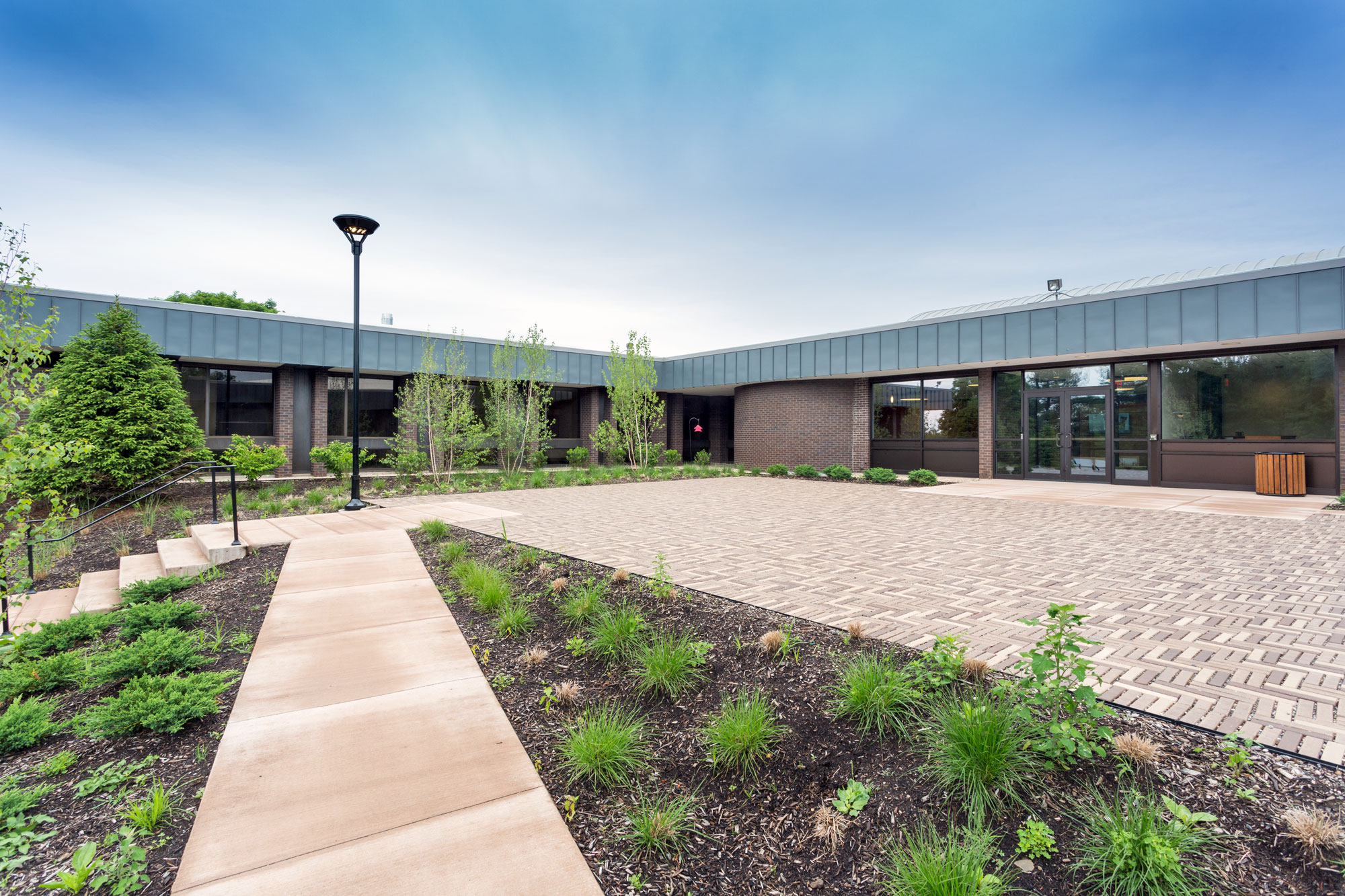
The advent of new technologies in the 1960s and 1970s made it increasingly expensive to operate Flower and Fifth Avenue Hospitals. In addition, the College was subsidizing faculty salaries to supplement private practice income. Around the mid-1960s, New York Medical College began to consider relocating its campus. After reviewing several options, the Board of Trustees voted to accept a proposal from Westchester County to apply for a federal grant that would fund nearly half the expense of creating a new medical center campus on the grounds of the former Grasslands Hospital, first used as a United States Army hospital during World War I. College administration moved to the Grasslands Reservation in Valhalla, New York, in August of 1971 and in 1972 the new Basic Sciences Building was opened.
The Relationship with the Archdiocese of New York
At this critical time in the College’s history, the Board of Trustees attempted to interest the Archdiocese of New York in College affairs. In 1978, Terence Cardinal Cooke, Archbishop of New York, agreed to foster a relationship. He perceived that affiliation with a medical college would be important to the continued excellence of an extensive Catholic hospital system. The Archdiocese helped the College restructure its debt on more favorable terms, strengthened the Board of Trustees, and added many Catholic hospitals to the College’s affiliations. It also assumed operation of Flower and Fifth Avenue Hospitals, converting the facility into a specialty hospital serving the developmentally disabled (It is presently known as Terence Cardinal Cooke Health Care Center). In 1980, intercession by the Archdiocese was critical in preventing the city from closing Metropolitan Hospital, the College’s oldest affiliation.
Decade of Achievement
During the “Decade of Achievement” (1978-1988), the size and stature of faculty, quality, and the amount of funded research, the caliber of students, and improvements in medical care afforded to people in communities served by the College increased significantly. The number of hospital affiliations grew to 34, providing medical students a wide range of clinical training opportunities. The National Institutes of Health research grants and contract awards more than doubled; sponsored programs (research, training, and service) and New York State appropriations grew to a record level of $23 million. The Graduate School of Health Sciences, now known as the School of Health Sciences and Practice (SHSP), was founded in 1980 to respond to the growing regional and national need for health care professionals.
New Directions
The College’s progress, distinguished by a marked increase in the academic quality of the student body, continued. In 1992, the College launched a strategic planning initiative. For almost three years, the academic community engaged in intensive committee meetings, retreats, focus groups, and surveys intended to clarify the institution’s strategic vision and direction. The resulting strategic plan, approved by the Board of Trustees, served as the foundation for the College’s reengineering efforts and is a valued reference document for program planning and resource allocation. Early in the decade, the Board of Trustees recognized that the nation’s demand for health care professionals would soon exceed supply and began to focus attention on SHSP, which was then the School of Public Health. The College charged the dean with responsibility for revitalizing the School and expanding program offerings. Within a few years, enrollment increased by more than 50 percent and currently exceeds 400 students. In 1997, the School’s new physical therapy program was accredited by the Commission on Accreditation in Physical Therapy Education. Subsequently, the Master of Science in Speech-Language Pathology Program began in 1999.
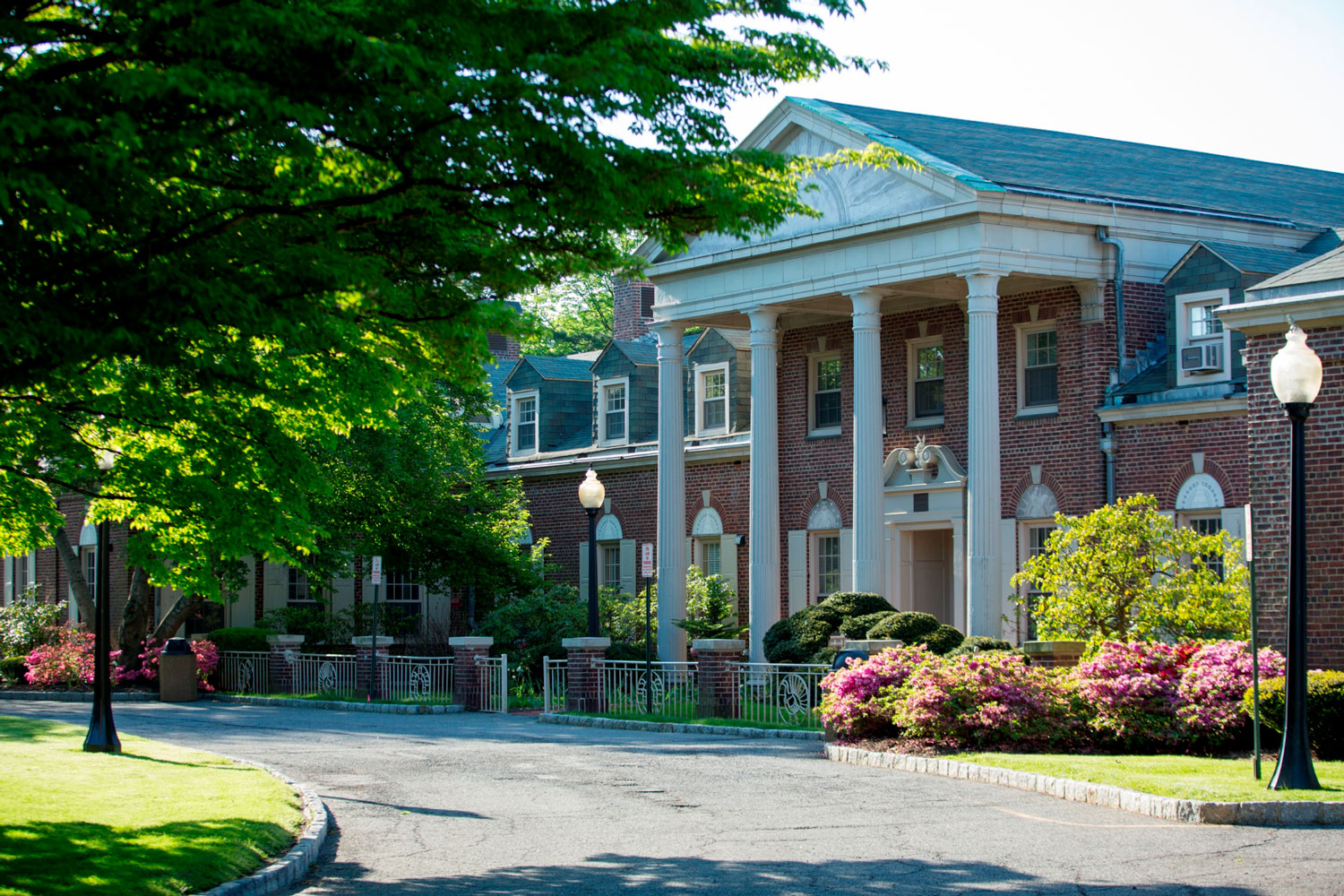
Leading the nation in response to a shortage of primary care physicians, the School of Medicine developed a program to double the number of medical school graduates who, after completing their residencies, enter generalist practices. The program, known as the generalist physician initiative, was awarded major funding from The Robert Wood Johnson Foundation, one of only 14 nationwide so designated. One innovative aspect of the generalist physician initiative, offered in conjunction with academic health center partner Saint Vincent’s Hospital and Medical Center of New York, afforded eligible fourth-year medical students an opportunity to begin a residency program in internal medicine and thereby complete training in six years rather than the traditional seven.
By the middle of the 1990s, the College had secured its first accreditation by the Commission on Higher Education of the Middle States Association of Colleges and Schools, concurrent with the School of Medicine’s re-accreditation by the Liaison Committee on Medical Education. On-campus housing expanded with the completion of new construction to accommodate an additional 300 students. A renovation of a campus building into a state-of-the-art Learning Center comprising classrooms, a computer laboratory, and small group study rooms was also completed.
As the College strengthened, the need for a chief academic officer became more apparent. In 1995, the College appointed a provost to serve in this capacity.
The School of Medicine recorded large research grants during this period for the study of endothelial cells, for the study of cellular immune reactions significant in cancer, for studies on hypertension and hormones relevant to the regulation of blood pressure, and for research in cardiovascular and renal disease, the neurosciences, and infectious diseases. In 2001, the College completed the construction of a new $24 million Medical Education Center and renovation of the Basic Sciences Building, the hub of campus research activity.
The Change in Sponsor and the New Relationship with Touro University
As a result of several years of operating deficits and the increasing recognition of the need for a university or health system sponsor to achieve positive synergies in education and medical research, the College actively sought a sponsor able to make a significant investment in the institution and offer expanded educational opportunities. The Archdiocese of New York, the sponsor of the College since 1978, had moved its health care ministry away from acute care hospitals, and as a result of this change in Archdiocesan mission, joined the College in seeking a nonprofit sponsor to take its place in fostering NYMC’s growth and prosperity.
After engaging in extensive negotiations and due diligence, the Archdiocese of New York and Touro College reached an agreement in late December 2009 for Touro to replace the Archdiocese as the sponsor of New York Medical College. The transaction was completed in mid-May 2011. According to the terms of the transaction agreement, the College would continue to operate as a separate institution, with the authority to appoint the College’s Board of Trustees being transferred from the Archdiocese to a new entity organized by Touro (NYMC, LLC).
Touro is a system of non-profit institutions of higher and professional education. Touro College was chartered in 1970 primarily to enrich the Jewish heritage, and to serve the larger American and global community. In February 2022, Touro in New York State was granted university status by the New York State Board of Regents after the Board voted to amend the charter to change the name to “Touro University” in recognition of the institution’s advanced academic standing. Approximately 19,000 students are currently enrolled in its various schools and divisions. Touro University has 30 campuses and locations in New York, California, Illinois, Montana, Nevada, New Mexico, Berlin, Jerusalem, and Moscow. New York Medical College; Touro University California and Touro University Nevada; Touro University Worldwide and its Touro College Los Angeles division; as well as Hebrew Theological College in Skokie, Illinois, are separately accredited institutions within the Touro University system.
Onward and Upward
Under the auspices of Touro, the NYMC campus expanded physically, academically, and culturally. New vigor was infused into NYMC's academic offerings, fostering interdisciplinary collaboration and attracting top-tier faculty and students. In December 2012, more than 500 guests celebrated the inauguration of Alan Kadish, M.D., as president, and Edward C. Halperin, M.D., M.A., as chancellor and chief executive officer.
In 2013, NYMC acquired 19 Skyline Drive, the former IBM headquarters, adjacent to the campus. The 250,000-square-foot, five-story building complex provided much-needed essential space for administrative offices, new programs, and clinical facilities. In 2014, renovations at 7 Dana Road were complete, and state-of-the-art space was debuted for the Clinical Skills and Simulation Center (CSSC), Center for Disaster Medicine (CDM), and BioInc@NYMC. The CSSC is a technology-rich training environment to support interprofessional and transdisciplinary learning programs for students and the local community, featuring examination rooms for standardized patient encounters and other clinical activities; two simulation rooms with high-fidelity manikins; Harvey cardiovascular manikins; a 110-seat classroom, procedural task trainers; and a faculty encounter/activity viewing area. The CDM conducts interdisciplinary research, training, technical assistance, and educational activities related to emergency preparedness for disasters, terrorism, and public health emergencies. BioInc@NYMC is the only biotechnology incubator on a health sciences college campus in the Mid-Hudson Valley, offering turnkey wet labs, dry labs, private offices, and conference rooms specifically designed to support early-stage companies and high-potential entrepreneurs within the biotech and medtech sectors.
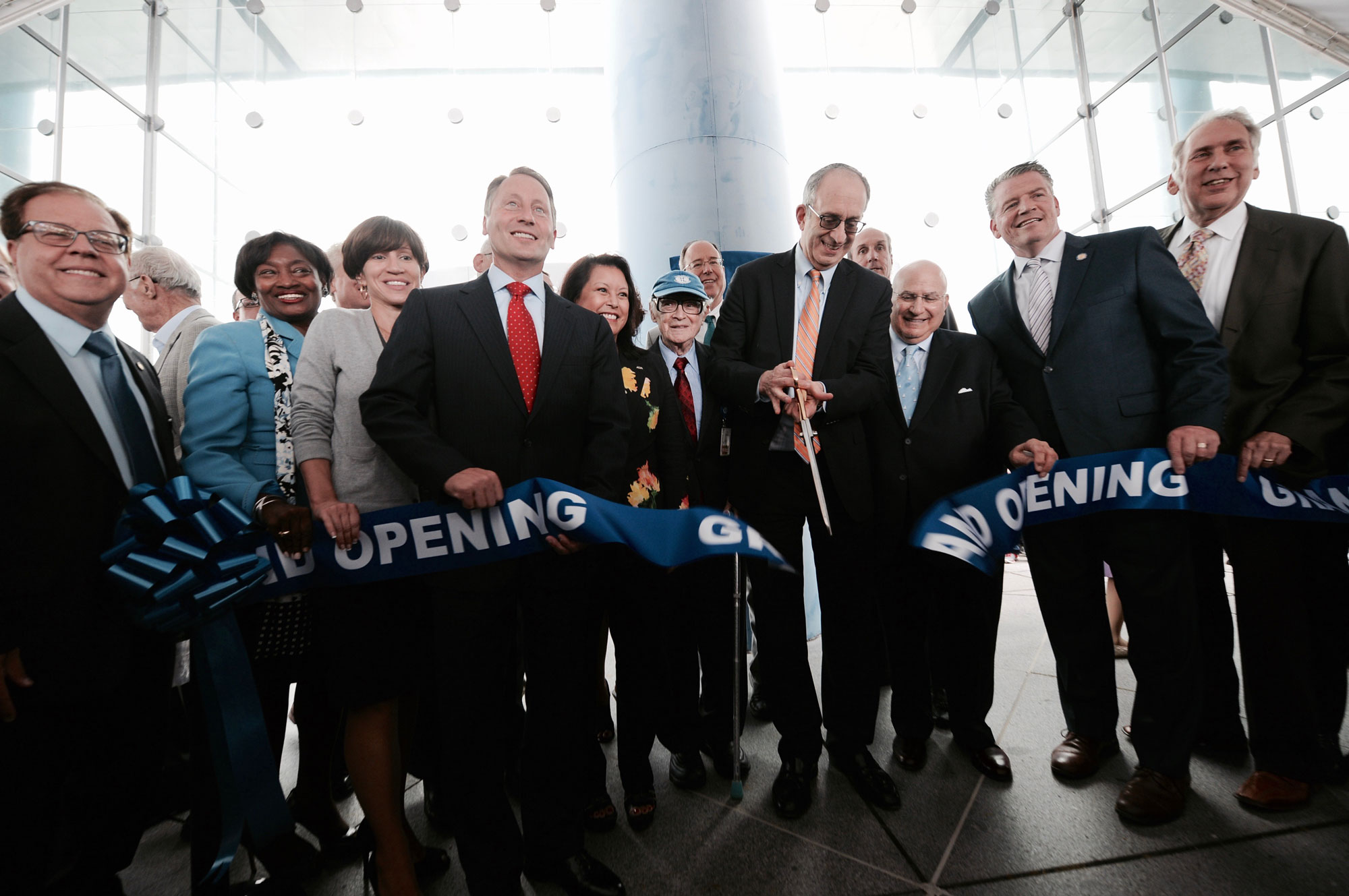
In fall 2016, the campus celebrated a major event: the opening of the Touro College of Dental Medicine at New York Medical College (TCDM), the first new dental school in New York State in nearly 50 years and the first dental school under Jewish auspices outside the state of Israel.
TCDM features state-of-the-art facilities with a progressive curriculum designed to prepare general dentists for the 21st century.
The dental school took residence in the College’s 19 Skyline Drive building. The expansive fourth floor was converted into 50,000 square feet of classrooms, lecture halls, simulation laboratories, and training facilities as well as student commons and offices. The third floor of the building was transformed into an advanced digital simulation lab for student training, featuring a sea of computerized dental simulation stations.
In January 2018, the TCDM opened a community dental clinic, Touro Dental Health, offering affordable, quality dental services to regional residents. This reinforced NYMC’s long-standing commitment to offering clinical care and service to the community while giving third- and fourth-year dental students significant opportunities for hands-on clinical experience.
In 2016, NYMC unveiled the Dr. Edward F. and Mrs. Anna M. Asprinio Fitness Center in 19 Skyline Drive, offering a full exercise facility with a dedicated space room for wellness classes for students, faculty, and staff.
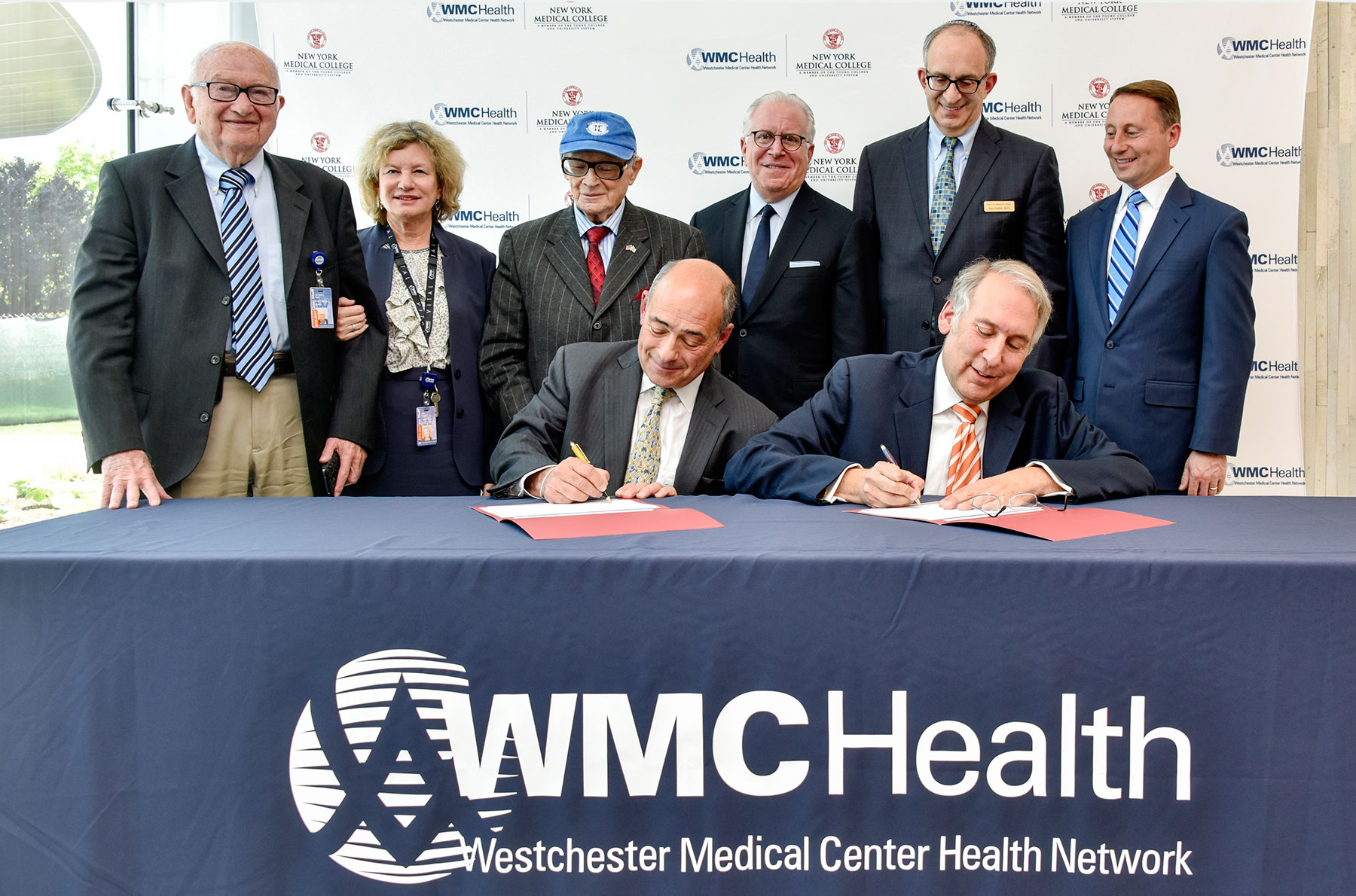
In May 2017, NYMC signed a 12-year Academic Affiliation Agreement with the Westchester Medical Center Health Network (WMCHealth), renewing and strengthening the partnership that had been forged with NYMC’s move to Westchester County in 1971 and expanding the prior agreement between the two institutions, signed in 1994. Under the new agreement, WMCHealth’s Valhalla hospitals – Westchester Medical Center, Maria Fareri Children’s Hospital, and the Behavioral Health Center – were named the primary teaching sites for the clinical education of NYMC and Touro-affiliated programs, and NYMC agreed to expand its clinical education to other hospitals in the WMCHealth Network. NYMC and WMCHealth also agreed to collaborate on clinical research, offering both institutions an opportunity for significant impact on the future of health care.
In 2019, NYMC launched the Family Health Center at 19 Skyline Drive, adjacent to Touro Dental Health. The outpatient faculty practice provides comprehensive, medical and preventive care, as well as urgent care. It also provides educational opportunities for medical and dental students. Shortly after opening, the Family Health Center had to quickly pivot to telehealth visits when the COVID-19 pandemic struck. In March 2021, the Family Health Center was among the first approximately 50 medical practices in the Hudson Valley to receive a limited supply of COVID-19 vaccines.
The Pandemic, the New Normal, and the Future
On January 31, 2020, one day after the World Health Organization declared the outbreak of a novel coronavirus a global health emergency, NYMC and Touro hosted an in-person symposium, “What Have We Learned? How Can We Use What We Have Learned?” That symposium morphed into a webinar series that ran 23 editions through December 2022 providing developments on the COVID-19 pandemic.
On April 8, 2020, more than 100 members of the School of Medicine Class of 2020 graduated one month early to join the fight against the deadly virus and provide much-needed medical support to the over-taxed hospitals facing the COVID-19 pandemic.
NYMC faculty became trusted experts sought out by media to explain the latest facts on the ever-evolving virus and its mutations. Faculty physicians, scientists, and health care professionals also shared their thoughts in editorials and opinion pieces that covered the virus and its implications in public health, research, bioethics and religion, politics, business, and the economy, resulting in the NYMC publication of Pandemic Perspectives: Observations in the Time of COVID-19. Faculty and administration published more than 200 editorials that reached hundreds of thousands of readers throughout the country, directly shaping the public's understanding of the pandemic. Scholarly publications also flourished in 2021, with 1,100 faculty publications, including 892 journal publications, 130 abstracts, nine books, and 69 book chapters.
In August 2021, NYMC was selected as one of five institutions by New York State to bolster efforts in identifying COVID-19 variants. The New York State Department of Health partnered with the NYMC Genomics Core Laboratory in the Department of Pathology, Microbiology, and Immunology, to access and process positive specimens of SARS-CoV-2, the virus that causes COVID-19, from large multi-county areas in New York State outside of New York City. Data is used to help build an understanding of disease manifestations, therapy or vaccine evasion and efficacy, and will support other discoveries to inform public health intervention.
On May 20, 2022, the Health Sciences Library was officially renamed the Phillip Capozzi, M.D., Library, after a generous legacy gift from alumnus Philip D. Capozzi, M.D. ’96.
At the start of the 2022-2023 academic year, the Graduate School of Basic Medical Sciences became the Graduate School of Biomedical Sciences, in a name change approved by the College’s Board of Trustees. The new title represents the variety of disciplines and range of academic and research activities that are the major focus of biomedical research and funding in the 21st century and aligns with the interests of modern graduate students.
The Women’s Institute for Science Entrepreneurship (WISE) at NYMC was created in 2023 to support women innovators in cultivating new scientific concepts and launching new businesses to make an impact in their communities and the world. It was established with an $825,000 award sponsored by New York Senator Kirsten Gillibrand and appropriated by the U.S. Department of Commerce, and the National Institute of Standards and Technology’s Scientific and Technical Research Services. WISE, directed by Marina K. Holz, Ph.D., M.P.H. ’23, dean of the Graduate School of Biomedical Sciences, brings together interdisciplinary teams of faculty and students at NYMC, Touro University, and BioInc@NYMC to connect students, researchers, faculty, and biotech entrepreneurs on- and off-campus to work collaboratively creating synergy to lead to groundbreaking scientific projects.
Laboratories in the Basic Sciences Building underwent significant renovations and upgrades that were completed in 2023 and include 17,000 square feet of multidisciplinary research space, accommodating up to 12 research teams, 3,000 square feet of shared core instrumentation space, and installation of flexible casework systems, and best-in-class equipment to foster innovation and collaboration. The labs feature new biosafety cabinets, tables designed to withstand vibrations, a shared enclave of protective fume hoods, enhanced lighting, and modular furniture to design custom layouts, specifically tailored to each lab’s investigations, as well as an open floorplan to help facilitate collaboration among researchers. The renovations transformed the space to become not only innovative, but collaborative by design to enrich and diversify biomedical research.
In the spring of 2025, the Medical Education Center Plaza was officially named The Norman E. Alexander Family M Foundation Medical Education Center Plaza following the foundation’s $3 million endowment to fund scholarships for medical students pursuing internal medicine. The gift, in honor of the late Norman E. Alexander, a distinguished businessman, philanthropist and former president of the NYMC Board of Trustees, was dedicated by Mark Alexander, M.D. '77, an NYMC alumnus and president of the foundation. The campus was also upgraded with the expansion of the Center for Disaster Medicine, with a state-of-the-art simulation center and two new classrooms, doubling the training capacity and allowing multiple programs to run simultaneously—an investment in the future of disaster preparedness.
Today, long-time NYMC faculty members and students speak of an outstanding medical education, excellence in teaching, a sense of community, and an enduring legacy. They speak of past accomplishments and future expectations. And they speak out of certainty that New York Medical College will remain vital and relevant come what may.
New York Medical College for Women
Until the early 1900s, New York State barred women as physicians in hospitals. In response, in 1863, Clemence Sophia Harned Lozier, M.D., who practiced medicine in New York specializing in obstetrics and surgery, opened a medical school exclusively for female students, the New York Medical College for Women, which was staffed and supervised by the College’s male faculty. Maria C. Ewen serves as the first president of the women's college board.
In 1867, Dr. Lozier’s institution graduated the first female Canadian physician, Emily Stowe, M.D., who had previously been refused admission to every medical school in her native Canada. Susan McKinney, M.D., 1870, the first African-American female physician in New York State and the third in the nation, graduated from New York Medical College for Women with the highest grade in the class.
In 1917, a year before the U.S. national amendment, New York State granted women suffrage. The following year, in 1918, for the first time, women graduate physicians were accepted in New York City municipal hospitals as interns. Later that same year, the College's Board of Trustees, in accord with the board president of the New York Medical College for Women, deemed it feasible to close the women’s college and transfer the women students to the College at large (then, known as "New York Homeopathic Medical College and Flower Hospital"). Thus, making the College fully co-educational.
Clemence Sophia Harned Lozier, M.D.

Foundress and dean, New York Medical College and Hospital for Women
Hometown: Plainfield, New Jersey
Born: December 11, 1813
Died: April 26, 1888
Clemence Sophia Harned Lozier, M.D., practiced medicine in New York specializing in obstetrics and surgery. As New York state barred women as physicians in hospitals, in 1863 Dr. Lozier opened a medical school exclusively for female students, the New York Medical College for Women, which was staffed and supervised by the College’s male faculty.
In 1860, prior to opening the school, Lozier began a series of lectures from her home on anatomy, physiology, and hygiene as these topics were regularly neglected in women’s education. Seeing high demand for the lectures and tired of seeing qualified women get turned away from medical school, Dr. Lozier, with the help of Elizabeth Cady Stanton, was able to persuade the New York State legislature to grant her a charter for a women’s medical college. In 1863, the New York Medical College for Women opened with seven female students in the inaugural class, and a faculty of eight doctors, four men and four women.
Over the next twenty-five years, the school grew and placed more than 200 female graduates in medical practice throughout the U.S. and abroad. The school’s hospital was the first place in New York where women could be treated by doctors of their own gender, and its clinic attracted up to 2,000 female patients each year.
Dr. Lozier gave the commencement address at the medical school’s 25th graduation ceremony in 1888 and passed away two days later at the age of 74.
In 1917, a year before the U.S. national amendment, New York state grants women suffrage. The following year, in 1918, for the first time, women graduate physicians are accepted in New York City municipal hospitals as interns. Later that same year, the College's Board of Trustees, in accord with the board president of the New York Medical College for Women, deems it feasible to close the women’s college and transfer the women students to the College at large (then, known as "New York Homeopathic Medical College and Flower Hospital"). Thus, making the College fully co-educational.
Susan Smith McKinney Steward, M.D.
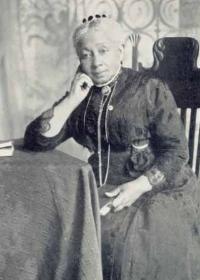
First African-American woman to earn a medical degree in New York state
Susan Smith McKinney-Steward, M.D. '1870
School of Medicine
Hometown: Brooklyn, New York
Born: 1847
Died: March 7, 1918
When Susan Smith McKinney-Steward, M.D., graduated valedictorian from the New York Medical College for Women in 1870, she was the first African-American woman to ever earn a medical degree in New York state, and the third in the United States.
Dr. Smith was of mixed heritage, her father of African descent and her mother was the daughter of a French officer and a Shinnecock woman. Dr. Smith started attending the medical school just a few years after the Emancipation Proclamation. After graduation, Dr. Smith McKinney-Steward practiced medicine in Brooklyn and Manhattan, specializing in prenatal care and childhood diseases. She founded The Women's Hospital and Dispensary in Brooklyn which later became The Memorial Hospital for Women and Children. She was a member of the Kings County and New York State Homeopathic Medical Societies and served as an official physician for the Brooklyn Home for Aged Colored People (now Brooklyn Home for the Aged), one of the early medical institutions in Weeksville, Brooklyn, where Dr. Smith McKinney-Steward was born. She also practiced at New York Medical College and Hospital for Women in Manhattan.
Dr. Smith McKinney-Steward earned medical licenses in Montana and Wyoming after spending several years traveling in these states with her husband, Theophilus Gould Steward, an ordained minister and U.S. Army chaplain. Dr. McKinney-Steward later joined Wilberforce University in Ohio as a resident physician and faculty member teaching health and nutrition.
She was an accomplished public speaker and in 1911 addressed the first Universal Race Congress at the University of London, England, with a presentation “Colored Women in America.” She later gave a speech, “Women in Medicine,” at the National Association of Colored Women’s Clubs Convention. Dr. Smith McKinney-Steward’s was also involved in local missionary work and women’s suffrage advocacy, and was president of the Brooklyn Women’s Christian Temperance Union.
Dr. McKinney-Steward passed away at the age of 71 on March 17, 1918, in Brooklyn. Notable author W.E.B. DuBois gave the eulogy at her funeral, and she was laid to rest in her birth town in the New York City borough of Brooklyn at Green-Wood Cemetery. Junior high school 265 in Brooklyn, Dr. Susan S. McKinney Secondary School of The Arts, is named in her honor. In 1976, black women physicians in New York, New Jersey and Connecticut, named their chapter of the National Medical Association in her honor.
Emily Howard Jennings Stowe, M.D.
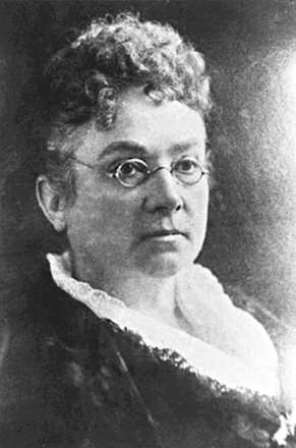
Class of 1867, New York Medical College for Women
First Canadian female to graduate with an M.D.
Hometown: Norwich, Ontario, Canada
Born: May 1, 1831
Died: April 29, 1903
After being denied entrance to medical school in Toronto, Canada, because the school did not admit women, Emily Howard Jennings Stowe, M.D. 1867, left her native Canada to attend New York Medical College for Women. After graduating in 1867, she began a practice in Toronto, the first Canadian woman to practice medicine in Canada.
After her experience fighting for acceptance in the medical community, Dr. Stowe became an ardent champion of women’s rights, including suffrage, education and medical education. In 1877, she helped found the influential Toronto Women’s Literary Guild, a group set up to fight for women’s rights and improved working conditions. The Guild is credited with making higher education at select Canadian institutions available to women.
Later in her career, she spearheaded the creation of Woman’s College Hospital in Toronto, and successfully petitioned medical schools in Canada to reverse its discrimination policy and admit women. Dr. Stowe’s own daughter, Augusta, was the first woman in Canada to earn a medical degree from a Canadian medical school.
Dr. Stowe was also tireless in her efforts to secure women’s right to vote, serving as President of Dominion Women’s Enfranchisement Association, an organization instrumental in women’s suffrage in Canada. Despite her lifelong efforts, Canadian women did not earn the right to vote until 1917, twelve years after Dr. Stowe’s death.
On April 12, 2018, Dr. Stowe was among six renowned medical pioneers inducted into the Canadian Medical Hall of Fame (CMHF).
Notable Historical Figures
NYMC has a long history of graduating distinguished physicians, research scientists and health leaders. NYMC faculty and alumni have made important strides in research areas related to infectious diseases and vaccine development. NYMC also graduated many notable “firsts,” including the first woman to practice medicine in Canada and the first woman to successfully perform open heart surgery. Learn more about the lives and accomplishments of notable historical figures at NYMC.


